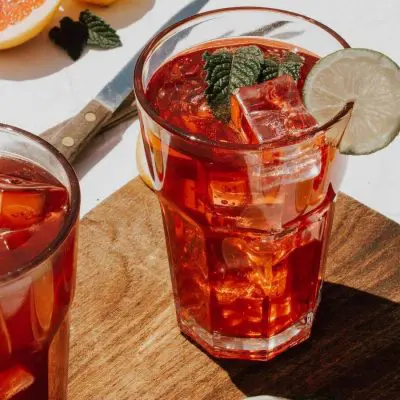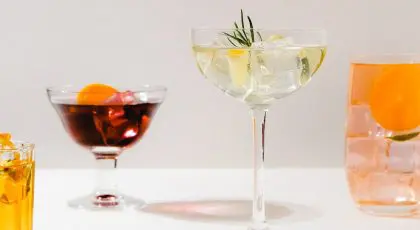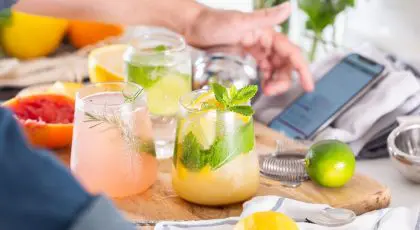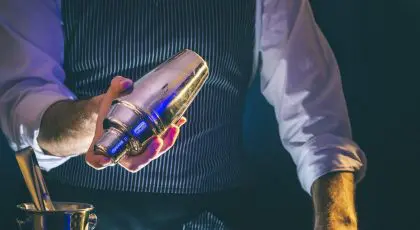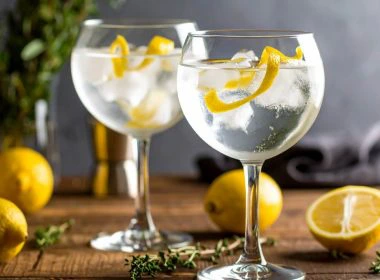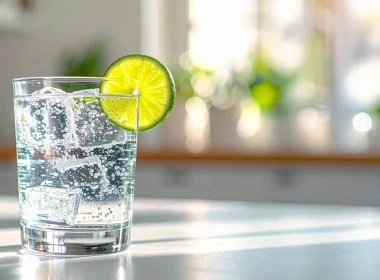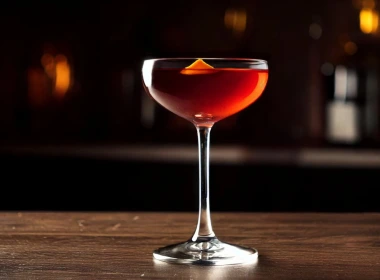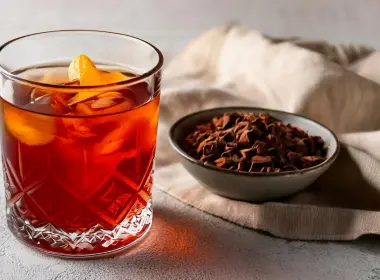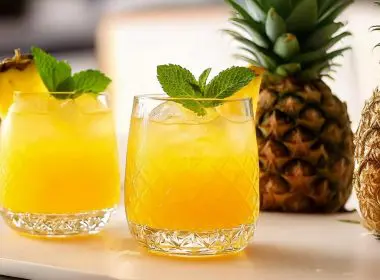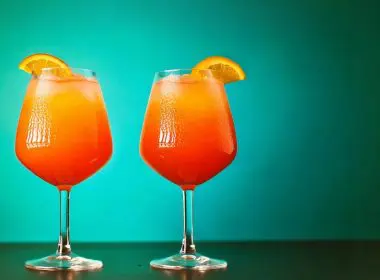Okay, But Why Are Cocktails Called Cocktails? Unravel the Mystery
Jump to:
There is a moment for us all when we’re holding a colorful and refreshing drink, that we turn to our friends and ask, “Why are cocktails called cocktails?”. Many will try to answer this question by pulling out their beloved search engines. Truth is that the etymology of the word cocktail is uncertain, and theories range from old Aztec princesses’ names to racehorses’ tails—as varied and enticing as cocktails themselves.
If you want to surprise everyone the next time the question comes up, grab a drink (and get some snacks) and read on!
The definition of cocktail
According to Merriam-Webster, a cocktail is “usually an iced drink of wine or distilled liquor mixed with flavoring ingredients”. Historically, the word ‘cocktail’ was a broad definition, reflecting the modern practice of calling almost any mixed drink a cocktail.
The word first appeared with its current meaning in 1806, in a New York newspaper called The Balance, and Columbian Repository. The article stated that a cocktail is a mix of “a stimulating liquor, composed of spirits of any kind, sugar, water and bitters”. An Old Fashioned is a typical example of a properly mixed drink that follows this formula. However, the history of the word cocktail is not unanimous and it’s still up for debate.
A brief history of the cocktail
The practice of mixing liqueurs and spirits to make flavorful cocktails has been around since the creation of hard spirits —like when Cleopatra was Queen! People would also mix drinks to make an ingredient more palatable or create medical elixirs, like digestifs, which help digestion.
The first cocktail might not have even been alcoholic, as in a satirical piece appeared in The Morning Post And Gazetteer in 1798, a bar tab listed a cocktail for three-quarters of a pence, far cheaper than anything with alcohol in it at the time. Many think cocktails were an American invention, but they were actually inspired by British punch, consisting of fruit juice mixed with alcohol.
These colorful drinks, however, wouldn’t have existed without one key ingredient: ice. Imagine drinking a Martini or a Negroni at room temperature. We can’t either. We need to thank the American merchant Frederic “Ice King” Tudor for his perseverance in finding a way to transport ice from colder climates to warmer ports, which eventually succeeded in making ice available across the US—and him a billionaire. Spirits surged in popularity as they were easier to transport and less perishable. That, combined with the availability of ice made cocktail culture explode.
Although accounts differ, many agree that the first ever cocktail was invented by the immigrant apothecary Antoine Peychaud. He created his eponymous bitters and invented the Sazerac, a drink consisting of brandy, absinthe, bitters and sugar, that is still popular today. The cocktail was named after its key ingredient: the cognac Sazerac de Forge et Fils. Today, the Sazerac also features whiskey as its core spirit.
It was an American bartender, Jerry Thomas, who really left an imprint on mixology with his 1862 book How To Mix Drinks or The Bon-Vivant’s Companions, where he featured different types of alcoholic drinks, including cocktails and the recipe for the Martinez, commonly accepted as the ancestor of the Martini.
Popular theories about the word ‘cocktail’
The first theory on cocktail etymology is linked to Mr Peychaud himself. According to history, he used to serve the Sazerac in eggcups that he called “coquetiers” in French. The Americans would mispronounce it as cocktay, hence inventing the word we know now.
Another popular theory involves the practice of mixing dregs (aka tailings) of empty barrels together to create cheaper drinks to sell. This makes sense only if you know that taps were also sometimes referred to as “cocks”, hence the word cocktailings shortened to cocktails.
One more theory involves 19th-century English sailors, who noticed drinks being stirred with a plant called “cola de Gallo” in Mexico. This literally translates to “cock’s tail”.
Still, the question remains: why is it called a cocktail? Hold on to your glass now. For a 19th-century racehorse, a raised and perky tail (or a cocked tail) was a sign of energy and vigour. Shady tradesmen would use ginger and pepper to enhance this effect and earn more money. Similarly, ginger and pepper were added to alcoholic drinks to liven up the beverage. Although they were replaced by bitters and botanicals over time, the word cocktails, meaning altered drinks, took over and can now be associated with (almost) any mixed drinks.
The anatomy of a cocktail
Let’s move on from this sticky subject to what a cocktail actually is. The anatomy of a cocktail features 3 main ingredients: the base alcohol (or basis), the body (the modifier), and the perfume (the flavoring agent).
The base
The base is the main spirit a cocktail is built upon, hence determining the type of drink and what ingredients are appropriate. For example, a Daiquiri’s base is rum, making it a rum-based cocktail, while a Sidecar is a brandy-based cocktail. Usually, mixing bases is a mixology no-go, but modern cocktails such as the Long Island Iced Tea (which features vodka, rum, gin and tequila) break this rule.
The body
The technical term is modifier, meaning that it’s an ingredient that modifies the base without dominating it. Too much body would overpower the base, making the drink overly sweet or bitter. Think of a light ingredient, like syrup, vermouth, juice or cream, or get creative and mix your modifiers.
The perfume
The perfume is the part of a cocktail that affects the nose and influences our perception of taste before the drink even hits our lips. Typically, this is the “cherry on top” and applied towards the end to complement the palette. It could be a fruit garnish, bitter, herbal liqueur, nuts or even coffee beans, to bring a striking sweet, bitter or zesty note to your final drink.
